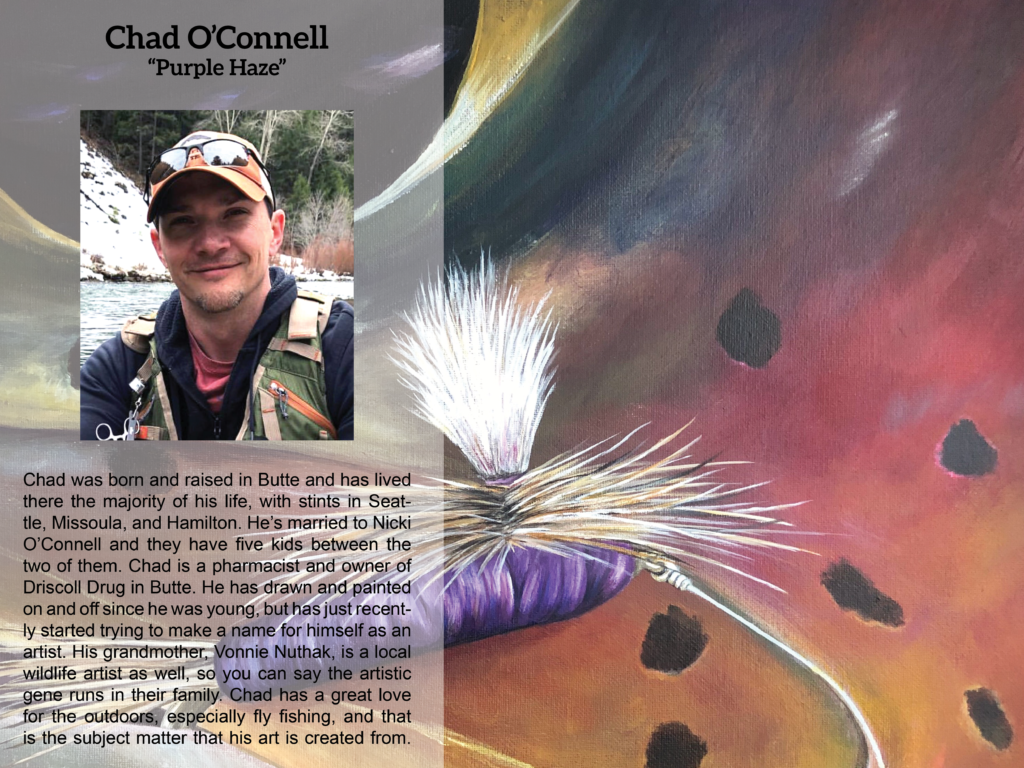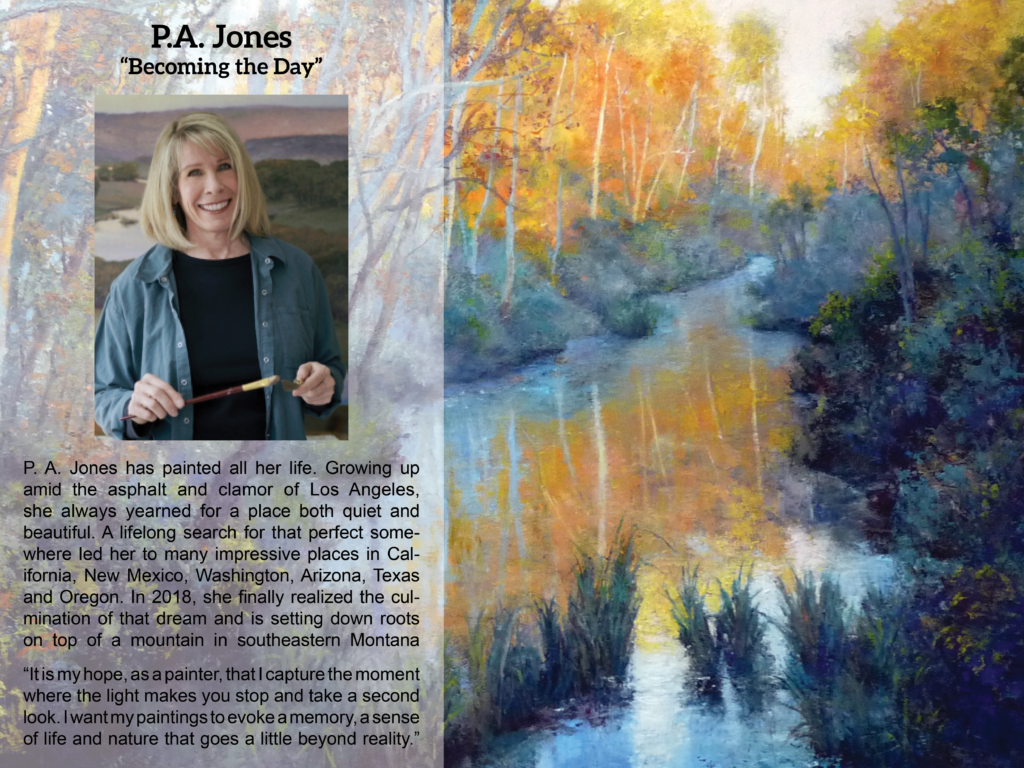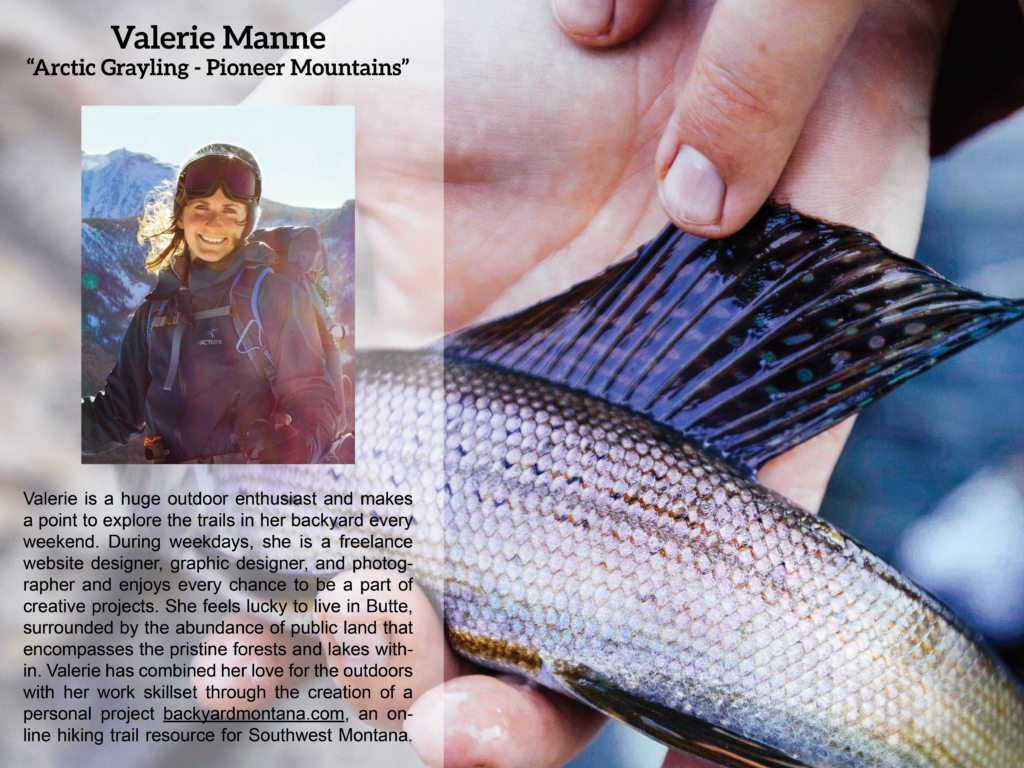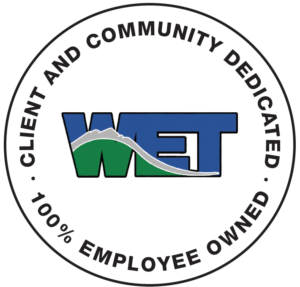Artists, Photographers & Crayon Scribblers Wanted!
The Clark Fork Watershed Education Program (CFWEP) and Butte-Silver Bow have teamed up to increase stormwater awareness in our community by placing public art on traffic signal boxes throughout Butte. Community members often don’t realize that all of Butte’s stormwater is untreated and eventually makes its way into either Blacktail or Silver Bow Creek. Unfortunately, this means trash, oil, and other materials make their way into these important bodies of water threatening the health of our precious water resources. The goal of this effort is to increase awareness of storm drain connections to our creeks while adding vibrancy to our community through public art installations (cfwep.org).
Here’s where you, your kids, family members and friends come in—we need artwork/photos!
WET is sponsoring four (4) traffic signal boxes in Butte that will be wrapped in artwork. If you would like to submit something, we will be accepting artwork until August 19, 2019. See artwork submission details below.
The winner will get their…
-Artwork displayed on a traffic signal box
-Name on a plaque at the traffic signal box location
-Photo taken with their traffic box to be placed on the CFWEP website
-Artwork showcased on WET’s social media sites
ALL ages and all artwork types welcome!
Artwork theme: ecological, aquatic, or riparian connectedness theme—honoring the unique ecology and beauty of the summit valley, our water resources, and the outdoor areas we all know and love.

___________________________________________________________________
Please submit artwork along with your name, phone, email, and artwork details.
Submit Digital Art: Email art to Kali Cummings at kcummings@waterenvtech.com.
Submit Hardcopy Art: Deliver or mail art to Water & Environmental Technologies (WET) | ATTN: Kali Cummings | Marketing Specialist | 480 East Park Street | Butte, MT 59701
If you have questions, please contact Kali at (406) 723-1530 or kcummings@waterenvtech.com.
Photos and artwork must be an original creation—no copyrighted art or photos may be used. WET is not responsible for intellectual property violations that might have resulted through the submissions of art or photos.
Winners
Congratulations to our four winners, Chad O’Connell, P.A. Jones, Valerie Manne, and Zenia Monteagudo! Stay tuned for more updates and images as these works of art get wrapped around Butte traffic signal boxes.






WET BEAUTIFIES BUTTE
Learn About the Stodden Park Improvement Project!
Calling all Artists to Help Increase Drain/Creek Awareness!
Artists, Photographers & Crayon Scribblers Wanted!
The Clark Fork Watershed Education Program (CFWEP) and Butte-Silver Bow have teamed up to increase stormwater awareness in our community by placing public art on traffic signal boxes throughout Butte. Community members often don’t realize that all of Butte’s stormwater is untreated and eventually makes its way into either Blacktail or Silver Bow Creek. Unfortunately, this means trash, oil, and other materials make their way into these important bodies of water threatening the health of our precious water resources. The goal of this effort is to increase awareness of storm drain connections to our creeks while adding vibrancy to our community through public art installations (cfwep.org).
Here’s where you, your kids, family members and friends come in—we need artwork/photos!
WET is sponsoring four (4) traffic signal boxes in Butte that will be wrapped in artwork. If you would like to submit something, we will be accepting artwork until August 19, 2019. See artwork submission details below.
The winner will get their…
-Artwork displayed on a traffic signal box
-Name on a plaque at the traffic signal box location
-Photo taken with their traffic box to be placed on the CFWEP website
-Artwork showcased on WET’s social media sites
ALL ages and all artwork types welcome!
Artwork theme: ecological, aquatic, or riparian connectedness theme—honoring the unique ecology and beauty of the summit valley, our water resources, and the outdoor areas we all know and love.
___________________________________________________________________
Please submit artwork along with your name, phone, email, and artwork details.
Submit Digital Art: Email art to Kali Cummings at kcummings@waterenvtech.com.
Submit Hardcopy Art: Deliver or mail art to Water & Environmental Technologies (WET) | ATTN: Kali Cummings | Marketing Specialist | 480 East Park Street | Butte, MT 59701
If you have questions, please contact Kali at (406) 723-1530 or kcummings@waterenvtech.com.
Photos and artwork must be an original creation—no copyrighted art or photos may be used. WET is not responsible for intellectual property violations that might have resulted through the submissions of art or photos.
Winners
Congratulations to our four winners, Chad O’Connell, P.A. Jones, Valerie Manne, and Zenia Monteagudo! Stay tuned for more updates and images as these works of art get wrapped around Butte traffic signal boxes.
WET Now Offers Air Quality Services!
Last month, Water & Environmental Technologies (WET) welcomed Stephen Coe to the Permitting and Engineering teams. Stephen joined the WET team as a Senior Engineer who will be providing project management and technical expertise, while primarily focusing on developing air quality services within WET. Stephen has a Bachelor of Science in Environmental Engineering and 26 years of industry experience.
When constructing a new industrial facility, expanding production, or modifying operations, owners/operators and facilities may be subject to air quality permitting requirements. Sources must be designed, constructed, and operated to comply with all applicable air quality regulations. Air quality requirements exist within a range of regulatory programs, including state/local, and federal programs such as New Source Review (NSR) and Title V operating permit programs. Technical requirements such as emissions quantification, control technology evaluations, air quality analysis (including dispersion modeling), ambient air and meteorological monitoring, emission standards applicability, and compliance assurance are all components of these regulations.
WET can assist with all phases of the air permitting process, assuring accurate, timely permit applications that are focused on maximum operational flexibility. Expert negotiations with regulatory agencies simplify the permitting process.
To learn more about all of our air quality services and to request a quote, visit our Air Quality Services Page and download the flyer.
Meet Erik Ingman, WET Project Engineer!
What do you do at WET (title and short/high level/laymen job description)?
I’m a Project Engineer for WET. I manage and design projects. This includes modeling and designing water mains, sanitary sewers, storm sewers, and site development; preparing project specifications and bid packages; and providing construction oversite and testing. I help on our permitting team when I can. I also survey from time to time.
How long have you been in the industry? How long with WET?
I have been in the consulting field for 3 years, 2 for WET. Before consulting I was a mining engineer at a strip coal mine for 3.5 years.
What is the most satisfying part of your job?
Most satisfying part of my job is working with the awesome team at WET to deliver projects just the way our Clients envision.
What do you do in your spare time (hobbies, sports, volunteering, family events, etc)?
When I’m not killing it in the office, I enjoy running, fishing, hunting, hiking, spending time with my family, and playing sports. Whenever I find a day to be at home, you bet I’ll be throwing some meat on the smoker.
What is an interesting/obscure fact about yourself?
I have a twin sister who is 26 minutes older than me.
It’s National STEM Day (November 8, 2018)
Happy National STEM Day!
In honor of National Science, Technology, Engineering, and Math (STEM) Day, we asked some of our interns and full-time employees pursuing higher education at Montana Tech in STEM what they enjoy most about STEM and what advice they have for those who are considering STEM programs.
Here’s what they had to say:
To learn more about National STEM Day, check out this Huffington Post article.
October is Employee Ownership Month
Putting the WE in WET—What Employee-Ownership Means to Us As we celebrate Employee Ownership Month, we reflect on what it means to be an employee-owner and work for a company that is 100% employee-owned. Casselbury (2018) states, “An employee-owned company plan is more commonly referred to as an ‘employee stock […]
Meet Forrest Jay, WET Senior Engineer!
What do you do at WET?
Senior Engineer responsible for development (residential and commercial) and utility projects (water, sewer, storm water, sitework, etc)
How long have you been in the industry? How long with WET?
I have been an engineer for 15 years, this is my 7th year at WET.
What is the most satisfying part of your job?
I like the challenge and variety of projects I get to work on with WET. I have been very fortunate to work with great clients and colleagues at WET.
What do you do in your spare time?
I serve as Vice President of the George Grant Chapter of Trout Unlimited and have been on the board for 5+ years. I am a licensed MT fishing guide and am guiding many of the weekends during the peak fishing season. When I am not working, I enjoy spending my spare time fishing with my lovely wife, Angela, and our four-legged children (Drake and Cooper). When I can’t be on the water, I spend my spare time tying flies and designing flies for CATCH Fly Fishing.
What is an interesting/obscure fact about yourself?
I used to be a pretty darn good trumpet player. Other than that, I am not really that interesting.
Meet Marcus Holland, WET Intern!
How long have you been in the industry? How long with WET?
What is the most satisfying part of your job?
What do you do in your spare time?
What is an interesting/obscure fact about yourself?
Meet Shari Kelley, WET Administrative Assistant!
How long have you been in the industry? How long with WET?
What is the most satisfying part of your job?
What do you do in your spare time?
What is an interesting/obscure fact about yourself?